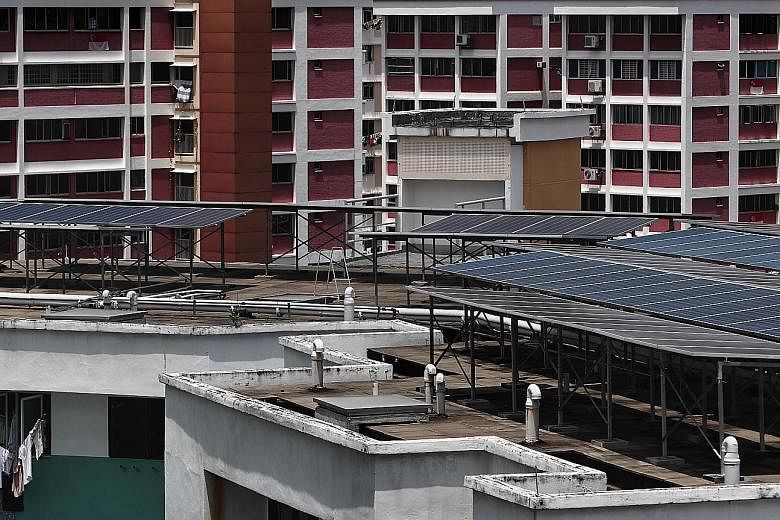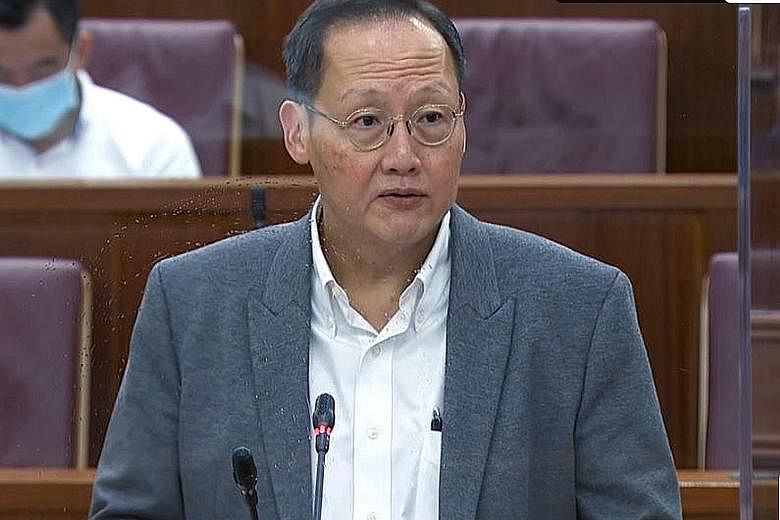Electricity demand in Singapore is expected to have fallen by between 2 per cent and 4 per cent last year due to the Covid-19 pandemic, but is projected to rebound as the economy recovers and grows.
Singapore wants to green its energy mix as this happens, but is also taking steps to ensure electricity supply remains stable and reliable, said Dr Tan See Leng, Second Minister for Trade and Industry, in Parliament yesterday.
"We will harness four switches to transform and diversify our energy supply, so as to achieve our vision of a clean and efficient energy future," he said in response to four MPs who had asked about Singapore's plans to tap renewable energy and import electricity.
Currently, 95 per cent of Singapore's electricity is generated from burning natural gas, the cleanest fossil fuel. Dr Tan said this fuel will continue to be the main source of energy in the medium term, given that the Republic does not have access to other renewable energy sources, such as hydro or wind power.
But the country is taking steps to increase the proportion of renewables in its energy mix in the longer term, he said.
For one thing, it will increase the amount of sunshine it harnesses.
Dr Tan said solar energy is the most viable source of renewable energy in Singapore, and pointed to how installed solar capacity has increased more than a hundredfold over the past decade, from 3.8 megawatt-peak in 2010, to around 400 megawatt-peak in mid-2020.
"We are accelerating our efforts and we will almost quadruple our solar capacity to 1.5 gigawatt-peak by 2025, and to 2 gigawatt-peak by 2030," he said.
Currently, less than 1 per cent of Singapore's electricity is generated by solar panels. But by 2030, Dr Tan said, solar energy could supply around 3 per cent of the country's total electricity consumption.
Another option is to tap regional power grids.
Last October, Minister for Trade and Industry Chan Chun Sing announced that Singapore will be importing 100MW of electricity from Malaysia over a trial period of two years. This makes up about 1.5 per cent of Singapore's peak electricity demand. Dr Tan said Singapore prefers to import electricity from renewable energy sources.
In response to Mr Saktiandi Supaat (Bishan-Toa Payoh GRC), who asked for an update on solar firm Sun Cable's plan to supply solar power from northern Australia to Singapore via the world's longest subsea high-voltage cable, Dr Tan said discussions are ongoing and that the Energy Market Authority under his ministry is unable to share details due to commercial sensitivities.
But he added: "While we welcome these interests, we have to pace these imports to ensure that they do not undermine the reliability of our electricity supply and the stability of our electricity market."
Dr Tan said Singapore is also looking to science and technology to make electricity generation greener. "We are working with the industry and research community to study emerging low-carbon technologies, such as hydrogen and carbon capture, utilisation and storage," he said, pointing to the new $49 million Low-Carbon Energy Research Funding Initiative.
This funding initiative, announced last October, will explore areas such as the supply, storage and downstream uses of hydrogen - which has the potential to be an environmentally-friendly fuel since it produces no emissions when burned - as well as carbon capture and storage for use in building materials or fuels, he said.
Asked by Ms Cheryl Chan (East Coast GRC) how Singapore could sooner achieve its decarbonisation goal, Dr Tan said the country is also looking to develop some form of a carbon trading platform.
"(This will help us) leverage the multiple initiatives that are available to help us reduce our carbon footprint," he said.



